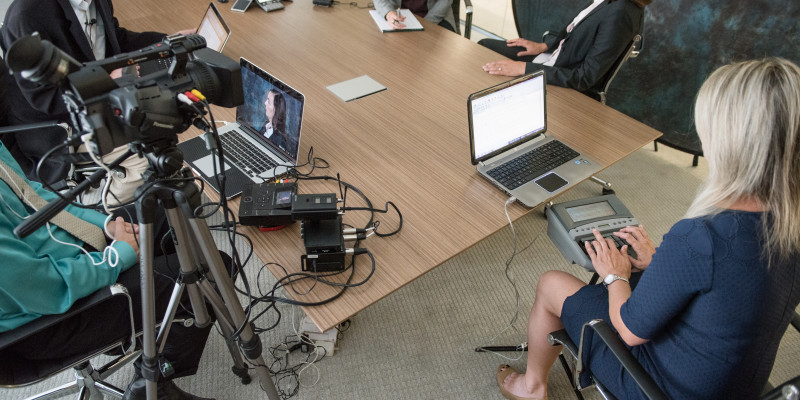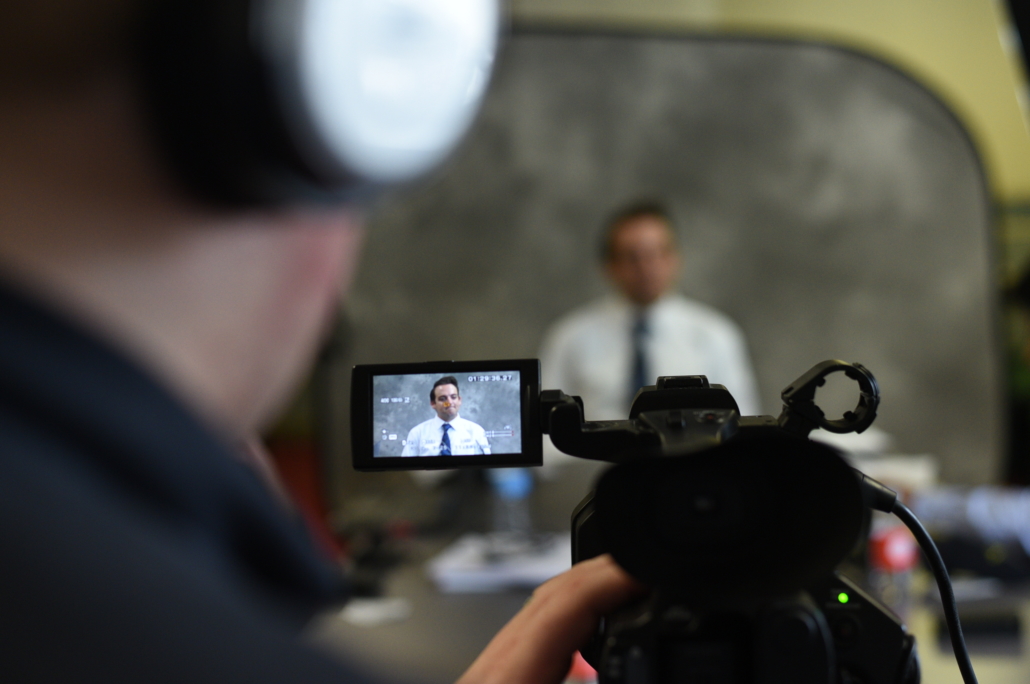How Legal Videography Boosts Court Room Discussions and Proof
How Legal Videography Boosts Court Room Discussions and Proof
Blog Article
Exploring the Systems of Legal Videography: Unveiling Its Operation in Shielding Authentic Aesthetic Testament for Judicial Procedures
In the world of judicial proceedings, the duty of lawful videography stands as a keystone in preserving and offering visual evidence. As innovation remains to advancement, the systems behind legal videography have actually become significantly intricate, offering an important layer of authenticity to testimonies caught on video clip. By diving into the operational details of legal videography, one can reveal the meticulous processes that guard the integrity of visual proof provided in courtrooms - Legal Videography. This exploration not only clarifies the historical development of legal videography however additionally hints at the future trends that might additionally revolutionize just how aesthetic statements are promoted in the realm of justice.
Historic Advancement of Lawful Videography
Examining the historic progression of legal videography reveals a significant makeover in the recording and discussion of visual proof within the lawful landscape. In the past, legal process greatly relied upon composed photographs and records to record events and give proof. However, with the introduction of video clip innovation, the lawful industry experienced a standard change in just how visual testament was captured and offered.
The development of lawful videography can be traced back to the late 20th century when innovations in video clip recording devices made it much more accessible for usage in courtrooms. This technical development not just boosted the precision and reliability of visual evidence yet also changed the method instances were presented to juries and judges (Legal Videography). Lawyers started to recognize the influential power of video recordings in sharing feelings, subtleties, and non-verbal hints that written records or pictures alone can not capture successfully

Modern Technology Developments in Video Paperwork
What key technological innovations have changed video clip paperwork in the lawful area? The legal area has seen significant innovations in video documents technology that have enhanced the credibility and dependability of aesthetic evidence in judicial proceedings. One of the essential improvements is high-definition (HD) video clip recording abilities, which give crystal-clear photos and sharp details that are important for accurately catching testaments, face expressions, and various other visual signs. Furthermore, the integration of timestamping and metadata attributes in video documents devices has actually enabled accurate documentation of when and where the video clip was recorded, ensuring the stability of the evidence provided in court.
Furthermore, innovations in video clip security and watermarking modern technologies have actually boosted the safety and tamper-proof nature of video evidence, securing it against unapproved alterations or tampering. The advent of cloud storage options and remote gain access to capacities has streamlined the storage, access, and sharing of video evidence, assisting in seamless collaboration amongst lawful experts and ensuring reliable access to crucial aesthetic statements when needed. These technical advancements in video clip documents have definitely reinvented the lawful field, improving the accuracy, integrity, and admissibility of aesthetic proof in judicial process.
Function of Lawful Videographers in Court Room Setups
The advancement of video documents modern technology in look what i found the lawful field has demanded an important function for lawful videographers in courtroom settings, ensuring the honesty and dependability of visual statements offered throughout judicial procedures. Lawful videographers play a basic duty in capturing and preserving exact visual proof that can be essential in litigation. Their responsibility their explanation reaches setting up equipment, videotaping procedures, and producing high-quality videos that properly mirror the events in the courtroom.
Furthermore, lawful videographers often function very closely with lawful groups to make certain that the video clip proof aligns with the instance's needs and can be efficiently presented in court to sustain the lawful arguments being made. Generally, the duty of legal videographers in court setups is vital in maintaining the principles of justice and guaranteeing the openness of legal proceedings. Legal Videography.

Ensuring Admissibility and Integrity of Video Proof
To maintain the reliability of visual evidence presented in legal process, ensuring the admissibility and stability of video clip evidence is a vital responsibility for legal videographers. Admissibility refers to the acceptance of proof by the court, and for video proof to be acceptable, it needs to satisfy particular criteria. Legal videographers play an important role in making certain that the video clips they record adhere to the guidelines of proof, such as authenticity, integrity, and relevance.
Integrity of video evidence involves keeping the originality and precision of the video footage from the time it is recorded up until it is presented in court. This includes firmly storing the video clip files, documenting the chain of custody, and avoiding any type of meddling or alterations. Legal videographers have to stick to stringent procedures to assure the stability of the video proof and protect against any type of challenges to its authenticity.
Future Trends in Legal Videography
Offered the enhancing dependence on innovation in legal proceedings, lawful videographers are positioned to accept innovative advancements shaping the future of visual testament capture and discussion. One of the prominent fads on the perspective is the combination of virtual fact (VR) and enhanced truth (AR) technologies into legal videography. These technologies have the prospective to change how aesthetic proof is provided in court rooms, allowing juries and judges to immerse themselves in the scene of the crime or occurrence.
In addition, the usage of artificial knowledge (AI) formulas for video analysis is anticipated to enhance the process of reviewing and analyzing large quantities of video clip footage. AI can help in recognizing key moments, anomalies, and patterns within videos, boosting the efficiency of lawful examinations.

Final Thought
Finally, legal videography has played an important duty in giving authentic aesthetic proof for judicial proceedings. Through technological advancements and the proficiency of legal videographers, the honesty and admissibility of video proof are ensured in courtroom setups. As lawful videography proceeds to advance, it will certainly be important to copyright standards that preserve the precision and reliability of visual statement for the future of lawful proceedings.
Checking out the historic development of lawful videography reveals a considerable makeover in the catching and presentation of visual important link proof within the legal landscape.The advancement of video documentation modern technology in the lawful field has demanded an essential duty for legal videographers in court setups, making sure the stability and dependability of visual statements offered during judicial proceedings. Additionally, lawful videographers frequently function very closely with legal teams to make sure that the video proof aligns with the instance's demands and can be properly provided in court to sustain the lawful debates being made.To maintain the trustworthiness of aesthetic proof presented in legal procedures, guaranteeing the admissibility and integrity of video proof is a critical obligation for lawful videographers. As legal videography proceeds to advance, it will certainly be necessary to maintain standards that keep the accuracy and reliability of visual testimony for the future of lawful proceedings.
Report this page